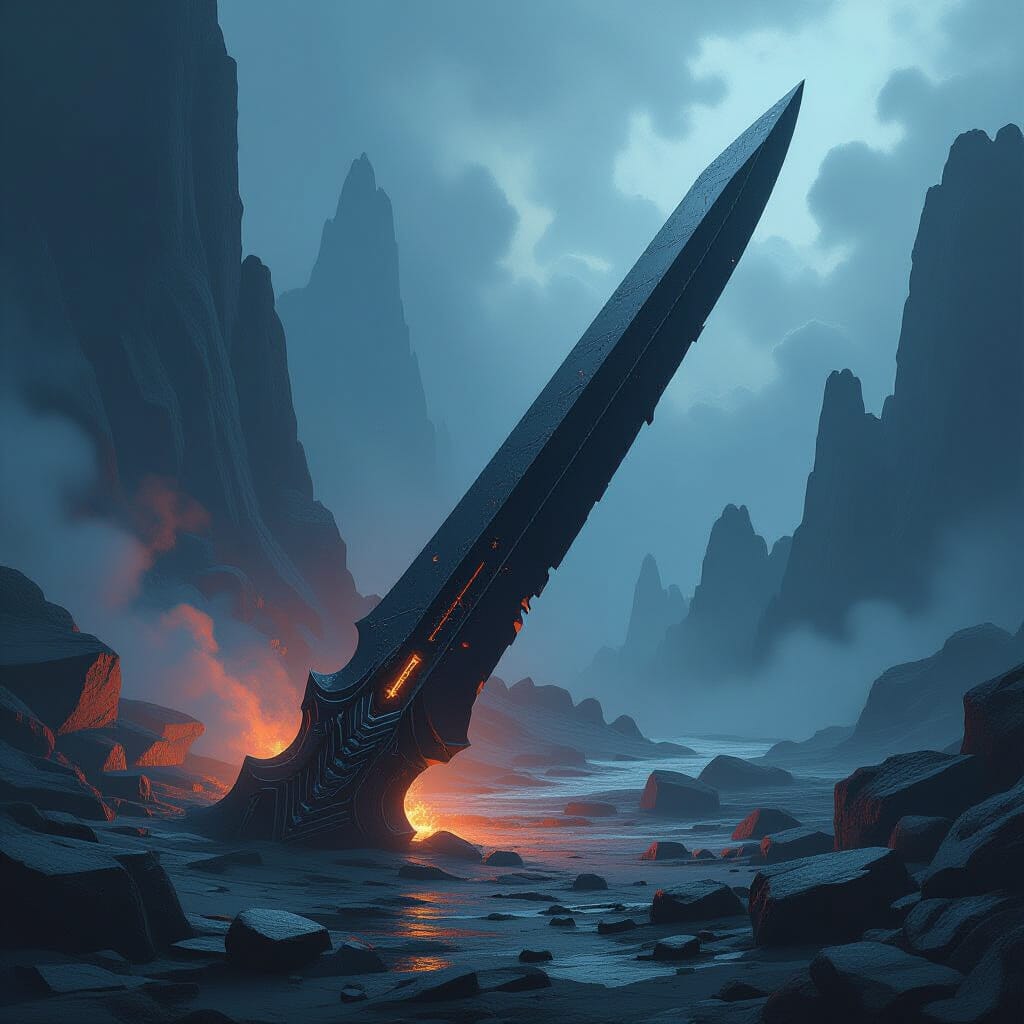
Obsidian Spearhead
Pressure-flaked volcanic glass; travel and repair in one sharp kit.
The content in this gallery was created by AI under human direction, then curated, reviewed, and edited by a human.

Material: Volcanic glass (obsidian), pressure-flaked.
Approx. date: Late Holocene (relative, stratigraphic).
Region: Inland Sahel caravan margin, secondary dune ridge.
Dimensions: 11.2 × 3.1 × 0.7 cm. On display courtesy of the Field School Depot.
Obsidian cuts because it breaks like lightning: conchoidal, fast, and purposeful. The maker seated the blank on a palm and drew sharp pressure along the edge to lift thin flakes, a rhythm of intake and release that turned glass into intention. Spearheads like this travel easily through both space and story. Their raw material often moves hundreds of kilometers from volcano to camp, bundled in trade as nodules or rough preforms. The polish along the hafting end suggests repeated mounting and removal—a kit that shifted between hunter, scout, and guardian as a day unfolded. Under magnification, tiny step fractures near the tip imply contact with bone or heavy hide. Whether that contact was feast or defense is not knowable here; the point is honest about use but discreet about outcome.
Similar pressure-flaked forms occur across Africa’s Rift and Sahara margins, but the narrow “waisted” hafting seen here aligns with riverine groups who preferred slimmer foreshafts that could be repaired quickly. Trace-element sourcing may link this glass to an East African flow; if so, the object also maps a conversation route—merchants, marriage ties, and seasonal employment—threading savanna and desert.
Functional labels like “weapon” or “hunting spear” risk flattening a complex life. Points live in ceremonies, bridewealth, oaths, and teaching kits. Without a secure excavated context and community testimony, this label keeps multiple possibilities open rather than declaring a single past.
On display, courtesy of: Field School Depot and the dune-ridge community committee.
Material: Volcanic glass (obsidian). Function: Spear point / hunting & defense.
Location Found: Dune-margin campsite, inland Sahel.
Obsidian is sharper than steel but brittle; its maker chose speed and precision over durability. Long, parallel pressure flake scars run from base to tip, showing controlled manufacture and a preference for a slim profile that flies true. Polish at the base indicates hafting with fiber wrap and resin. Impact step-fractures at the tip hint at contact with bone or dense hide. Obsidian sources are absent locally, signaling trade or mobility; the point is thus also a map in miniature.
Material: Fossilized dung. Function: Dietary & environmental record.
Location Found: Shelter floor lens.
Coprolites are time capsules—seed coats, bone splinters, and phytoliths unravel meals, seasons, and risk.
Material: Basalt with iron-rich patina. Function: Boundary / oath marker.
Location Found: River terrace.
Shallow crossing incisions serve as witnesses—names paired with promises renewed by touch. Basalt’s weight anchors law to deep time more than to a single ruler.
Material: Cast bronze; traces of galena. Function: Cosmetic storage.
Kohl is both beauty and medicine; lining eyelids cuts glare. Years of touch and oil turned the metal’s surface into memory.
Material: Human bone. Function: Osteological evidence.
Healed groove implies an old injury survived; ethics of handling remain paramount.
Material: Silica glaze with copper colorants. Function: Protective amulet.
Blue-green faience promises water and life—ornament and passport moving between trade languages.